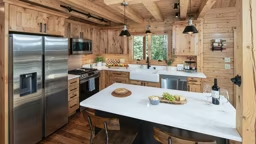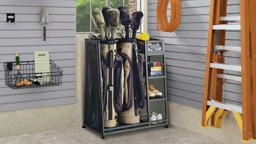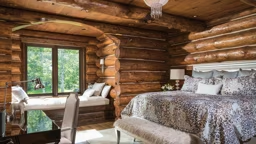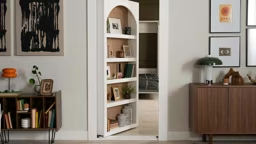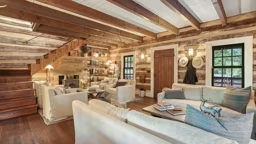 |
| A corner wrapped with windows opens up the periphery and suggests a panaromic view. James Ray Spahn photo |
The first time you set foot on your land — yes, long before you learned of its great value and proximity to local amenities — the dealmaker was less practical, but equally important: amazing views. Water, trees, mountains — whatever vista you had, you wanted to incorporate it into your life. "Log, timber-frame and hybrid homes are usually built in a more natural setting, and the very reason they're being built there is because someone fell in love with the views," says Allen Halcomb, president of MossCreek, a design firm based in Knoxville, Tennessee. "Incorporating that into a home is a common request." Sounds practical and simple enough. Just throw in some windows and, voila! Well, kind of.
The process is actually a little more nuanced. It depends on where you build and what kind of view you want to capture, because both will affect the architecture of your home. (Deciding this early in the design process is essential.) According to Allen, when it comes to viewpoints, there are two types of homes. There are those in a wooded setting but with no view beyond the deck or garden. And then there are homes with a true vista, whether it looks up toward mountain peaks, down to a valley or body of water, or straight across the water's edge. Here are Allen's tips for getting it right.
Framing the View
Windows will, indeed, be the main conduit through which you connect your home to the outdoors. "Windows frame a view and become a portal that ushers in that view," Allen says. For scenery in relatively close proximity (like a flowerbed in the garden), "keep glass low to the floor so you can see from the inside that there's a close surface outside, whether it's flowers, lawn or decking," he suggests. Low windows are also advantageous for bringing a distant lake view closer. "If you position your great room glass low to the floor and don't put anything in front of it architecturally — so there's no handrail, no deck, no porch — you can adjust the bottom height of the window so that in key sitting areas, you see your wood floor going to your window, and the next thing you see is water," Allen explains. He calls it an "infinity-edge great room," similar to an infinity-edge pool that is designed to give the illusion of water extending to the horizon. "You'd be astonished. It almost feels like the house is on the water, even though it can be a great distance away."Size Requirements
There's a certain sense of proportion you'll need to achieve with window size in relation to the square footage of your home and the rooms inside. The bigger the home, the larger the rooms. This means the requirement for glass gets larger, especially if you want a jaw-dropping view that starts in the foyer and runs straight through to the great room and beyond. In a 4,000- to 5,000-square-foot home with a 24-by-24-foot great room, it wouldn't be unusual to have 20 feet of glass from left to right, according to Allen. No matter what size your home, to truly open up a room to the outdoors, the glass should be wider than your peripheral vision. This doesn't necessarily mean installing a single wall-to-wall window. Rather, combine a set of windows in a row.In the dining room, for example, a common arrangement is to have 9 feet of glass made up of three 3-foot windows or two 4 1/2-foot windows. "If you're sitting at a dining-room table that's a typical distance from a window, this really brings the outside in, because even as your cone of vision broadens with the distance that you're away from that window, 9 feet is still enough to reach the boundaries of your peripheral vision," Allen says. Another option is to wrap a corner of the home with a couple of windows. This opens up the periphery and suggests a panoramic view. With cozy chairs tucked into the corner, it might feel like you're sitting outdoors. The ideal scenario, of course, is being able to enjoy the view from any vantage point in your home, not just when you're standing with nose pressed to glass. There are times, though, when a close relationship to glass is a requirement — specifically, when a window seat is involved. For this type of cozy setting, where you might be a mere 8 inches from the glass, plan for a scaled-down window opening.




